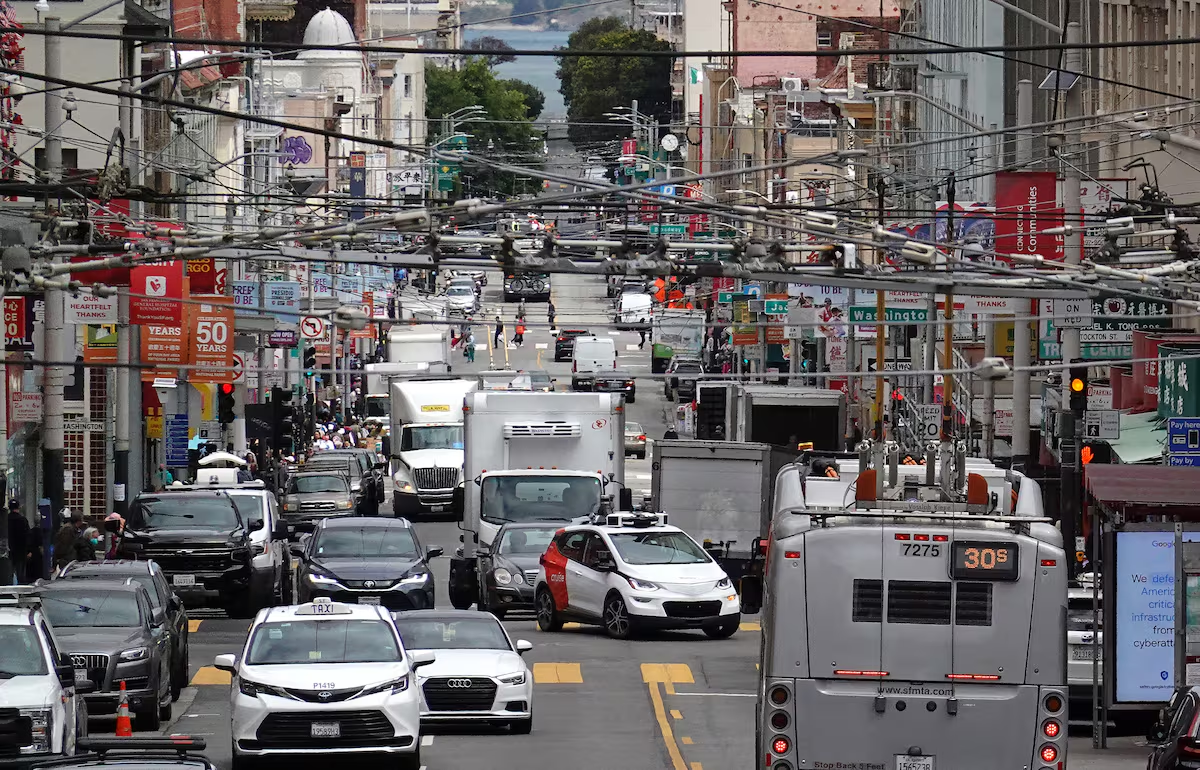
Washington Post – Cruise to pay $1.5 million for hiding details of pedestrian-dragging crash
Editors note: It has now been established that Cruise not only severely injured the pedestrian, but that they withheld key information from regulators. The resulting $1.5 million fine is unfortunately inconsequential. Cruise burns through more than that amount of money every single day. The people responsible, including the the CEO of Cruise at the time, should be held criminally liable for their actions. This company should not be allowed to continue using public streets for testing their proven dangerous technology.
It should also be noted that there are several inaccuracies in this article. The pedestrian was not “flung”. And the Cruise vehicle did not stop “immediately” but instead dragged the pedestrian for 25′ before stopping, and then another 20′ when it started up again. Details are here.
See original article by Trisha Thadani at Washington Post
The General Motors subsidiary’s settlement with the National Highway Traffic Safety Administration is the latest fallout from a horrific crash in San Francisco last year.
SAN FRANCISCO — Self-driving car company Cruise, owned by General Motors, must pay a $1.5 million fine to the National Highway Traffic Safety Administration, the federal agency said Monday, after ruling that the company knowingly withheld critical information about a horrific crash involving a pedestrian in San Francisco last year.
Cruise was also required to report additional data on several incidents, including the San Francisco crash. In that incident, one of its cars hit and rolled over a jaywalking pedestrian and then dragged her 20 feet last October.
The settlement is the latest blow for Cruise, which halted road testing and became the subject of investigations by the Department of Justice and the Securities and Exchange Commission after the crash. The company, which reportedly reached a multimillion-dollar settlement with the gravely injured pedestrian, provided NHTSA with two incomplete crash reports about the incident that failed to disclose the extent of the crash, the agency said.
Cruise also provided the agency with “several incomplete reports” for other crashes involving its automated driving system, the agency said, breaching a Standing General Order from 2021 that requires companies operating self-driving cars to report what happened before, during and after a crash.
As part of the settlement, Cruise has amended its report on the San Francisco crash and on four low-speed crashes in which no severe injuries occurred.
“It is vitally important for companies developing automated driving systems to prioritize safety and transparency from the start,” said Sophie Shulman, NHTSA Deputy Administrator. “NHTSA is using its enforcement authority to ensure operators and manufacturers comply with all legal obligations and work to protect all road users.”
The agency opened an investigation into Cruise after the Oct. 2 crash, which happened after a jaywalking pedestrian stepped into a busy intersection in San Francisco and was hit by a human-driven car. The pedestrian rolled onto the windshield for a few moments before she was flung [editor: the pedestrian was not actually “flung”] into the path of the driverless Chevrolet Bolt electric vehicle operated by Cruise.
Footage of the crash initially shared by Cruise with The Washington Post, other media outlets and the California Department of Motor Vehicles showed the driverless car stopping as soon as it made contact with the pedestrian [editor: the vehicle actually took approximately 25′ to stop].
But the company’s first report to NHTSA after the incident failed to mention that the vehicle subsequently started moving again and “had dragged the pedestrian,” who was pulled 20 feet along the ground, according to the agency’s consent order, posted Monday.
NHTSA said that Cruise was “aware” of the dragging incident at the time it filed the two initial reports, but still chose to withhold the information. It wasn’t until a month later, on Nov. 3, that the company filed its first report to the federal agency that disclosed the dragging incident.
In a separate investigation into the crash, the California Department of Motor Vehicles said Cruise posed an “unreasonable risk” to public safety and suspended the company’s driverless permits. The company pulled its entire fleet of driverless vehicles across the country and has since slowly resumed operations with humans behind the wheels in a few cities.
As part of NHTSA’s consent order, Cruise will pay a total penalty of $1.5 million, and is required to submit a corrective action plan to the federal agency on how it will improve its compliance with the agency’s data reporting requirements. Under the agreement, the company must also provide the agency with information regarding the scope of its operations, including the miles its vehicles travel, the number of Cruise vehicles operating, whether those vehicles are operating without a driver and any citations they receive or traffic violations they commit.
NHTSA’s investigation into the San Francisco incident is ongoing. The Department of Justice and the Securities and Exchange Commission have opened separate investigations into the company.
“Our agreement with NHTSA is a step forward in a new chapter for Cruise, building on our progress under new leadership, improved processes and culture, and a firm commitment to greater transparency with our regulators,” Steve Kenner, Cruise’s chief safety officer, said in a statement. “We look forward to continued close collaboration with NHTSA as our operations progress, in service of our shared goal of improving road safety.”
See original article by Trisha Thadani at Washington Post
